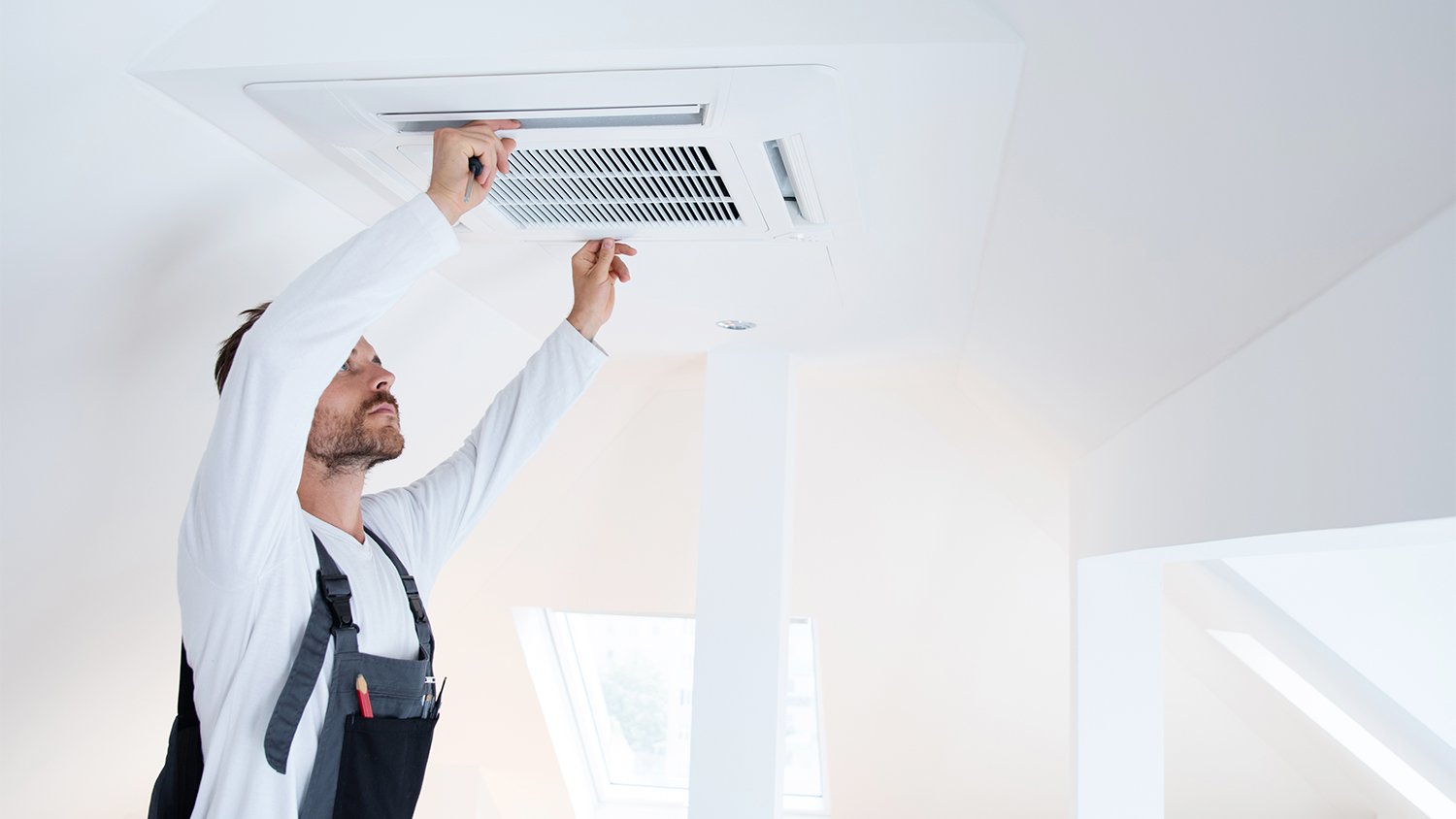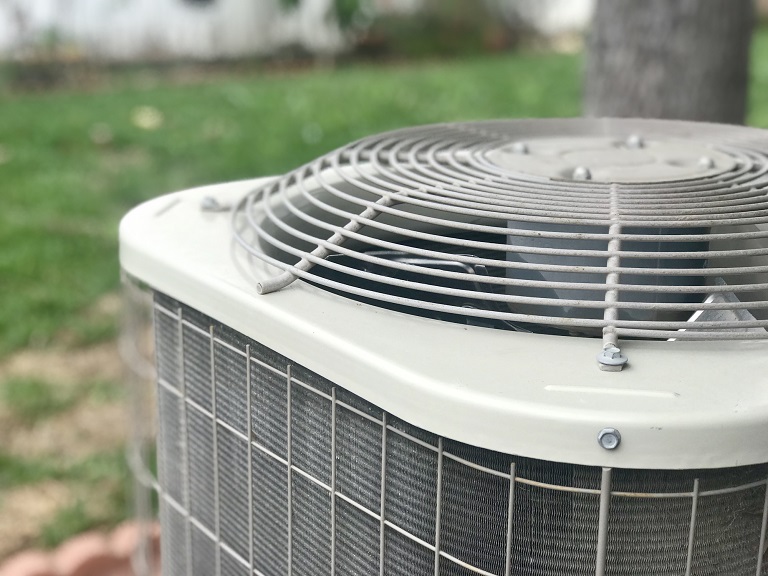
Springing for HVAC maintenance costs may seem like an extra—and easy-to-ignore—item on your checklist, but it will save you money in the long run.
Perform regular cleaning on your HRV system to ensure maximum performance


Focus your efforts on air filters, which play a major role in how efficient your HRV system is.
Make sure that any vents to the exterior aren’t clogged with tree debris or dirt.
Carry out a DIY inspection once per year on other components.
Call in a professional for routine maintenance and if you notice issues with your equipment.
A heat recovery ventilator (HRV) is a great option for homeowners who want to keep fresh air circulating throughout the home while minimizing heat loss in the process. If you have an HRV system, you should perform regular maintenance to ensure it stays in tip-top shape. In this guide, we’ll discuss a few tips for maintaining your HRV system to prolong its life and improve performance.
A heat recovery ventilator (HRV), which is a type of HVAC system add-on, usually consists of four main components:
A core unit
Ducts that carry fresh air from outside
Ducts that carry exhaust air from your HVAC system
Blower fans
The core unit is the portion of the HRV where the heat exchange takes place. It includes a counterflow heat exchanger, as well as a heat pump. Both the supply and exhaust ducts flow through the core unit, and as they do, heat is exchanged based on the demands of your HVAC system.
When it’s hot outside, the cool exhaust air is used to cool off the warm air coming into the home. This helps reduce the strain on your HVAC condenser and AC capacitor, as less cooling is needed. When it’s cold outside, the warm exhaust air heats the cold intake air, which, again, reduces the amount of work your HVAC system needs to do.
If you have a baseboard heating system or steam system instead of a forced hot air system, the HRV system can still remain active for your central air and remain dormant during the colder weather.
The fresh air ducts pull air from outside your home, lead into the core unit, and eventually connect to your HVAC system for cooling or heating. These ducts sometimes run underground through a ground heat exchanger to condition the air a little before it hits your HVAC system for complete conditioning.
The exhaust ducts in your HRV take stale air from your living space, route it through the core unit, and vent outside.
When it’s warm outside, the cool air in the exhaust ducts can cool off warm intake air via the counterflow heat exchanger to reduce strain on your AC system. When it’s cold outside, the warm exhaust air heats up incoming fresh air to reduce strain on your furnace.
Blower fans are the components in your HVAC system that circulate air, and they work the same way in an HRV system. When the fans are on, they force air through your system. When they’re off, the air in your ducts remains more or less stagnant. An HRV system uses several blower fans to circulate air in both the intake and exhaust ducts.
Now that you understand how the system works, we can discuss how to carry out heat recovery ventilator maintenance.
Whenever you're dealing with mechanical systems that run on electricity, it's always best to turn off and unplug the system first for safety reasons. Even if you’re just replacing filters, shutting the system down can prevent personal injury or damage to your system if something goes wrong.
For optimal performance, you should know how to clean HRV filters and carry out the cleaning process every two months. Since your system pulls in fresh air from outside, the filters are more likely to get clogged with pollen, dirt, and other debris, so cleaning them regularly is the best practice.
To do this, remove or open the door on the front of your unit, unclip and slide the air filters forward and remove them from the unit, and use a vacuum cleaner and rag to clean up any significant buildup. Soak the filter in warm water, rinse, and let dry. Then, put the filters back in the unit.
You should replace air filters in your HRV unit every six to 12 months. Exactly how often depends on how dirty your air filters are getting. If they get very dirty between cleanings and are showing signs of wear, err on the side of caution and replace them twice per year. If buildup is minimal, you can just do it once per year.
Don’t use a pressure washer to clean the air filters, because it can damage them. Running them under a sink faucet should do the trick.
It's not just the air filters you need to be concerned about: the HRV outdoor intake and exhaust hoods can get clogged with leaves and other debris that can affect the performance of your system.
If the vents aren't fully cleared, the airflow won't be as strong and the system won't work as well, so keep them clear. In the winter, be especially mindful of snow or frost building up and blocking the vents.
While keeping the air filters and vents clean will go a long way to ensuring your HRV is functioning optimally, there are other parts of the system that you’ll want to perform maintenance on, as well.
Condensate drain: This is a tube that comes out of the bottom of the unit and disposes of condensation that builds up as heat exchanges between ducts; you can check it by pouring warm water into the drain pan to ensure proper flow. If it’s clogged, use a pipe cleaner or a mixture of baking soda and vinegar to clear it.
Heat exchange core: Consult with your manual first before cleaning the energy recovery component in your system, which should at least be done annually. If you know how to clean the HRV core, you can do that when you clean your filters. You should vacuum the core and wash it with soap and water to prevent dust buildup. Remember to shut off your system and unplug it until it’s completely dry.
Ductwork: Inspect the grilles that cover the duct ends to see if they need cleaning.

While you can do a lot HRV maintenance yourself, it may be best to contact an HVAC company near you to do the work. Even if you are keeping air filters and vents clean, you should still have a pro service your system annually. They can spot potential issues you may have missed and make repairs before issues get severe. They can also tell you when it may be time for a replacement.
An HVAC professional can also do more complicated maintenance, like ensuring the motor is working properly by reviewing belt wear, adjusting belt tension, cleaning dust and dirt from blower wheels, and lubricating bearings, all of which can extend the life of your system. You might even consider getting an HVAC maintenance service contract.
Additionally, you should consider testing the air quality in your home to ensure your HVAC system and HRV are working properly. The cost of indoor air quality testing is $400 on average. You can also use an indoor air quality checklist to evaluate the air in your home yourself.
From average costs to expert advice, get all the answers you need to get your job done.

Springing for HVAC maintenance costs may seem like an extra—and easy-to-ignore—item on your checklist, but it will save you money in the long run.

Switching from oil to gas heating could impact your savings. This guide will help you understand the cost to convert from an oil furnace to a gas furnace.

Find out the average humidifier repair cost, what impacts pricing, and how to save. Get expert tips to budget for your humidifier repair.

Discover the average air handler replacement cost, including labor and materials, plus expert tips to help you budget and save on your HVAC upgrade.

When you notice hot and cold zones in your home, it pays to learn how to balance airflow in your ducts to even out the temperature.
How to clean your air conditioner depends on the unit type. Sometimes, a good hose-down is all you need if you have centralized AC. This guide can help with the cleaning process.